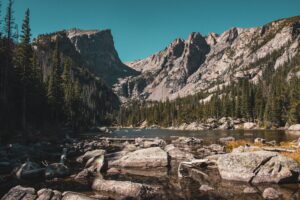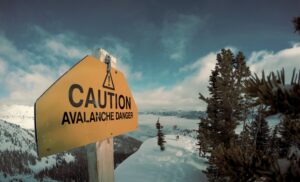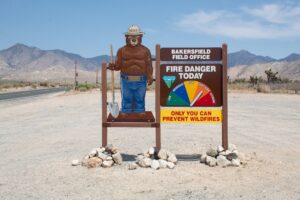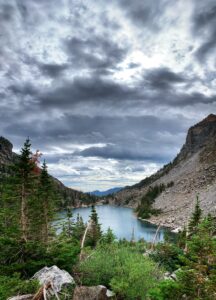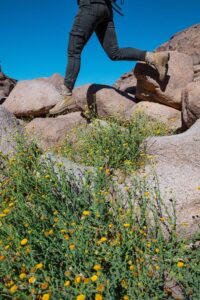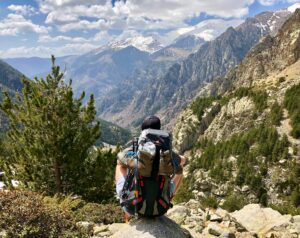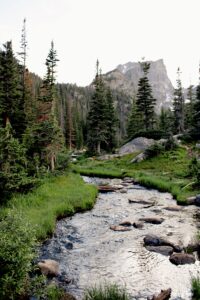Summer is undoubtedly one of the most cherished and awaited seasons of the year, and when it comes to Colorado, it is even more special. With its unmatched natural beauty, breathtaking mountain views, challenging terrains, and a plethora of recreational activities to choose from, Colorado’s outdoors are something that every adventure lover should experience. If you’re planning to visit Colorado this summer, here are a few tips that will help you prepare for a safe and enjoyable summer full of fun in the high country of the Rocky Mountains.
Know Before You Go
No matter how you choose to spend a glorious day in the high country, it is critical to plan ahead and assess any potential risks before you go. This includes checking fire danger, snowpack, and avalanche hazards, which all can pose a serious risk when overlooked.
-
Avalanche and Snowpack
While it may be sunny and warm at lower elevations, always remember snow and ice are present at higher altitudes. Snowpack can be unstable and prone to triggering a deadly avalanche. Check the current avalanche and snowpack conditions to plan a predictable trip and avoid any unnecessary and frightening situations.
-
Wildfires
Wildfires are a real danger during the summer months and can cause devastating damage to the environment, particularly in areas with dry vegetation and hot temperatures. High altitude means closer exposure to lightning and stronger wind patterns that foster ideal conditions for wildfires. It is always a good idea to check wildfire risk areas and obey any local fire restrictions, rules and regulations in place. If you are entering somewhere where fire danger is present, be sure to have an evacuation plan in place in case you need to leave the area quickly.
Check the Forecast
One of the best ways to prepare yourself for your time in the high country is to understand normal weather pattern for the season, as well as check the forecast before you depart. Summer weather patterns in the high country can be unpredictable, extreme and change rapidly. Random thunderstorms are common with rain, hail, and lightning strikes even occurring through the months of June and July. In addition to checking the mountain forecast, take note of any weather advisories or warnings that may be in effect. Be prepared to modify your plans or reschedule your trip if necessary to avoid dangerous weather conditions.
What to Wear
-
Layers
Since weather in the mountains can vary and change drastically, it is important to pack layers and a variety of clothing options. Contrary to popular belief, it does not always get hot in the Rockies during the summer months. The temperature can drop unexpectedly, and how positive your experience is often depends on how prepared you are. Morning and evenings are especially chilly, and afternoon storms are common in the mountains.
I suggest wearing pants and long sleeves; this will help protect you from the strong UV rays up there during the day while providing just a bit more warmth when you need it. I would pack a sweater and raincoat or any wind and waterproof outer layer that can keep you safe and dry from those quick afternoon storms that roll in at a moment’s notice.
-
Footwear
Especially if you plan to hike, you may experience extreme terrain and sneakers are not going to cut it. I suggest bringing hiking boots with good support and traction—if they are waterproof, even better! You can even find socks that wick away moisture to keep your feet dry and comfortable while hiking.
What to Bring
• Water
Colorado’s high country can be quite dry, and the higher altitude can lead to dehydration. Always carry a water bottle with you, and keep sipping regularly, even if you’re not feeling thirsty. Read more about how to reduce altitude sickness in the mountains!
• Sunscreen
Protecting yourself from harmful UV rays is even more important at higher elevation due to a thinner atmosphere. Be sure to apply sunscreen of at least 30 SPF generously, and reapply throughout the day. You may also want some glasses and a good wide brim hat to keep your neck, face, and eyes protected from the increased UV rays.
• First Aid Kit
Carry a basic first aid kit with bandages, antiseptic, and your pain reliever of choice (Ibuprofen, or Tylenol). No one wants to think about an emergency, much less face a dire situation without the correct supplies.
• Animal Deterrent
Depending on the area you will be visiting, there is the potential for large predators in the high country. You will want protection for yourself as well as anyone (any pets) you may be bringing along. This can range from simple deterrents like a bear bell or spray to a flashlight taser. Be aware that some national parks require visitors to have some kind of animal deterrent with them.
• Other Hazards
Beyond these risks, it’s also important to take note of any other trail hazards that may be present, like unsafe river crossings or steep cliffs. Bringing a map, compass, and GPS can help you navigate unfamiliar terrain safely or if you get lost. Additionally, make sure your cellphone has a full charge and carry a portable battery pack or solar charger.
Other Things to Remain Aware Of
• Wildlife
As you venture into the high country, you will be entering the domain of a vast array of wildlife, including elk, big horn sheep, mountain lions, and black bears. As you venture into their home, always stay on the trail and respect the space and environment of any wildlife you encounter. Animals in the high country can become aggressive if they feel provoked or threatened. Encountering wildlife can be a rewarding experience but it is important to act with due diligence around these majestic animals and ALWAYS keep a safe distance. Follow wildlife safety protocols and Leave-No-Trace principles, which include packing out all your trash, and staying on designated trails.
• Pets
Bringing your furry friend along can be a fun experience for both of you, but make note that many national parks and recreation areas will have strict rules and regulations for pets in the area! Consider booties or paw wax to keep your furry friends’ feet safe in the rough terrain. Bring enough water for your animal, poo bags, and a leash. You never know if you will run across a momma bear with cubs and the last thing you want is Ol’ yeller running full speed into an encounter that you can’t follow him into.
• Altitude sickness
Altitude sickness is a condition caused by low oxygen levels at high elevations. Symptoms include loss of appetite, headaches, fatigue, dizziness, and difficulty sleeping. If you experience these symptoms take action to prevent the condition from worsening. Staying hydrated will play a vital role in keeping your equilibrium functioning in your favor at high elevation.
The high country of Colorado during the summer is an outdoor lover’s paradise. With beautiful mountains, stunning vistas, endless opportunities for outdoor adventure, and summer events, there is no shortage of things to see and do. But the weather, as well as the environment can be highly unpredictable, meaning it is important to be prepared for all conditions. By following these tips, you’ll be ready to enjoy the best of Breckenridge and the Rockies in the summertime!
Written by Melanie Hamilton, Contributing Member of the Sales and Marketing Team
Edited by Rosa Canales, Marketing Specialist

